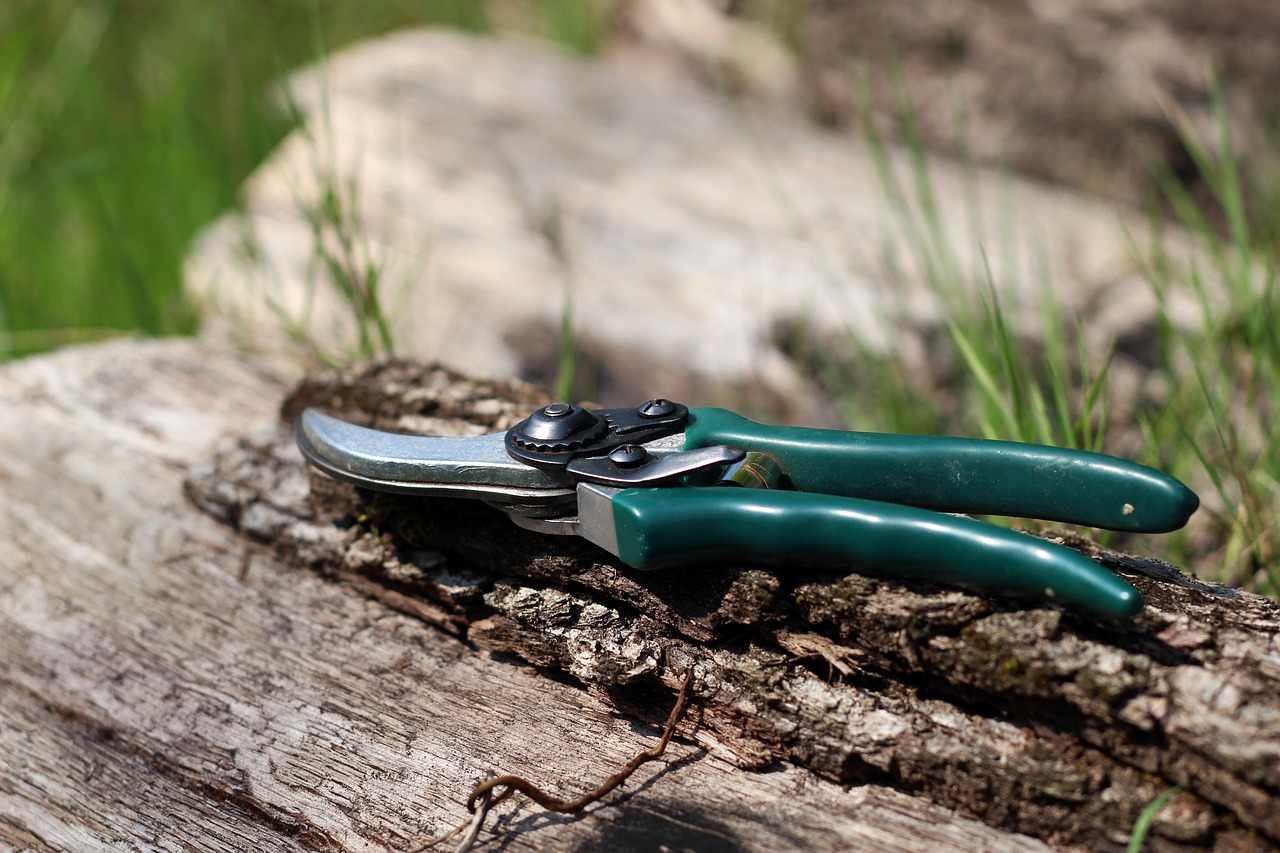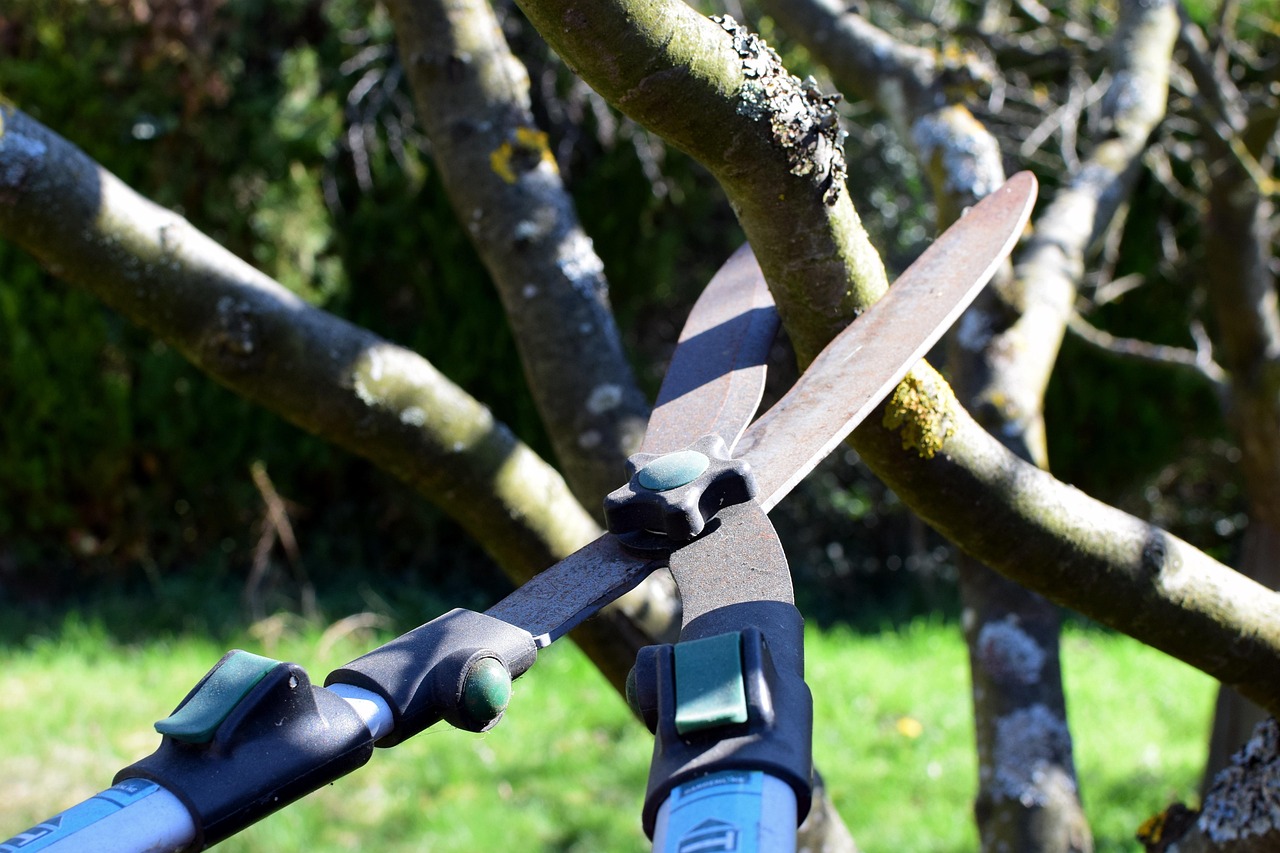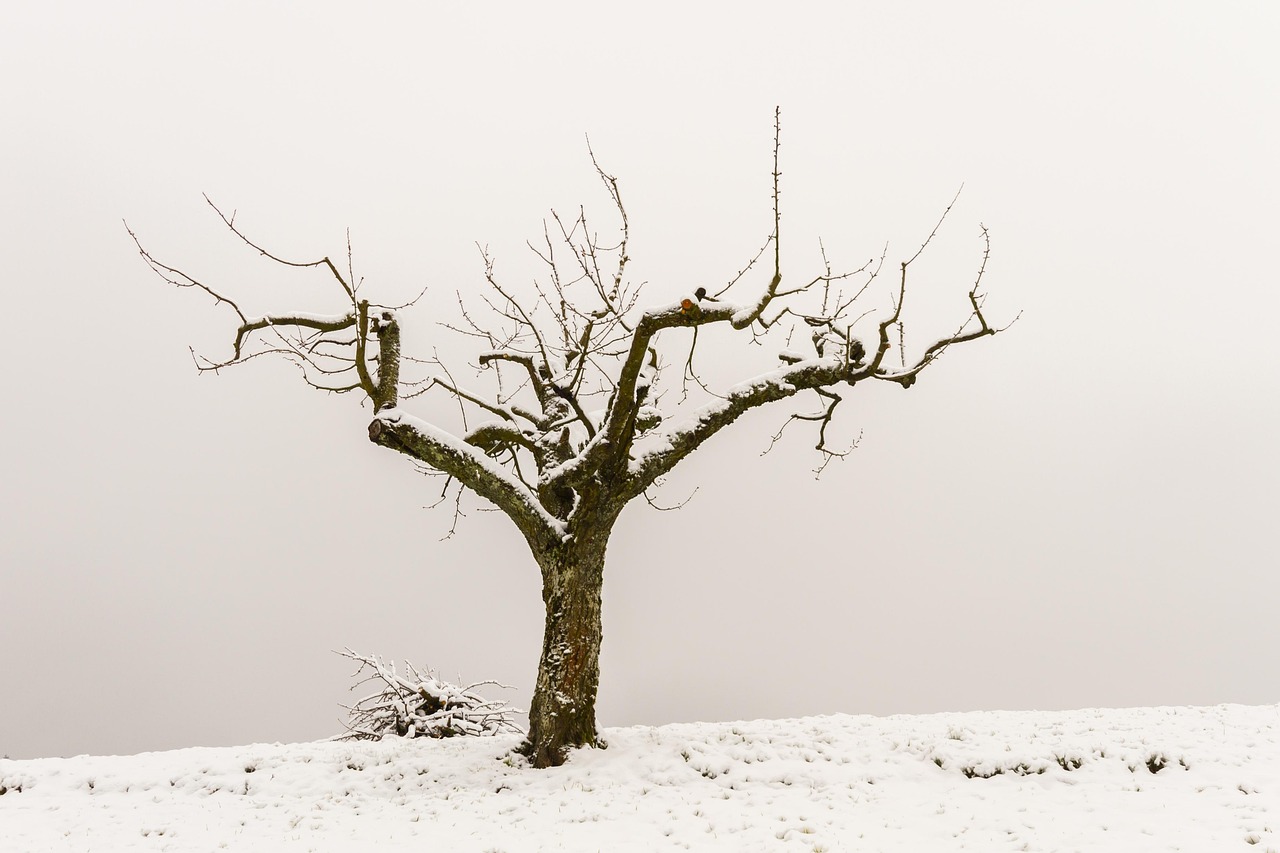Advanced pruning techniques for isolating and removing cankers involve identifying infected branches and cutting them back to healthy tissue, ensuring clean cuts to minimize further infection. Sterilizing tools before and after use is crucial to prevent spreading pathogens. Additionally, monitoring the plant's health post-pruning and applying protective treatments can help promote recovery and prevent future canker issues.
Advanced pruning techniques are essential for effectively isolating and removing cankers, which are harmful growths caused by fungal pathogens. By carefully identifying and cutting affected areas, gardeners can promote healthier plants and prevent the spread of disease.
Cankers are a common issue in various types of plants, affecting trees, shrubs, and even some herbaceous plants. These lesions can inhibit the plant’s ability to transport water and nutrients, leading to further decline. Understanding how to identify and manage cankers is vital for maintaining plant health and vigor.

Advanced pruning goes beyond standard techniques. It requires knowledge of the plant’s structure, growth patterns, and the specific type of canker affecting it. Proper timing and technique during pruning are crucial to ensure that the plant can recover and thrive after treatment.
Understanding Cankers
Cankers can manifest as sunken areas on the bark or wood of the plant. They often appear as dark spots or lesions that may ooze sap. The causes of cankers vary, but they are typically associated with fungal infections or bacterial pathogens. Factors such as environmental stress, injury, or poor plant health can exacerbate the issue.
Several types of cankers exist, each requiring specific management strategies. Here are some common types:

| Type of Canker | Causes | Common Hosts |
|---|---|---|
| Cytospora Canker | Fungal infection due to Cytospora species | Pines, spruces, and other conifers |
| Phomopsis Canker | Fungal infection caused by Phomopsis species | Junipers and other shrubs |
| Botryosphaeria Canker | Fungal infection from Botryosphaeria species | Fruit trees such as apples and peaches |
Proper identification of the canker type is essential for effective treatment. Each type may require different methods for isolation and removal. Early detection is key to preventing extensive damage to the plant.
Signs and Symptoms of Cankers
Recognizing the signs of cankers is critical for successful management. Symptoms can vary depending on the species affected but generally include:
- Sunken lesions on branches or trunks
- Discoloration of bark, often dark or black
- Oozing sap or resin from affected areas
- Dieback of shoots or branches
- Wilting leaves or reduced foliage
If you notice any of these symptoms on your plants, prompt action is necessary. Delaying treatment can lead to further spread of the disease, potentially affecting neighboring plants.

The Importance of Pruning
Pruning is an essential horticultural practice that promotes plant health by improving airflow and light penetration. In the case of cankers, pruning serves an even more critical role in isolating and removing infected tissue. By cutting away affected areas, gardeners can help prevent the spread of canker pathogens to healthy parts of the plant.
Advanced pruning techniques require careful planning and execution. Before beginning, gather the necessary tools such as sharp pruners, loppers, and disinfectants. Ensure that your tools are clean to avoid introducing additional pathogens during the process.
Steps for Advanced Pruning
To effectively isolate and remove cankers, follow these steps:

- Identify affected areas by examining the plant closely.
- Determine the extent of the infection by tracing lesions back to healthy wood.
- Make clean cuts at least 6 inches below the visible canker to ensure complete removal.
- Disinfect tools between cuts to prevent cross-contamination.
- Dispose of all cuttings properly to avoid re-infection.
Each step is crucial for effective management. By following these guidelines, you can significantly improve your chances of helping your plants recover from canker infections.
Post-Pruning Care
After pruning, it is important to care for your plants properly. Provide adequate water and nutrients to support recovery. Monitor the plants closely for any signs of returning disease or new infections. In some cases, applying fungicides may be necessary to protect against future outbreaks.
Regularly inspecting your plants will help you catch any issues early on. This proactive approach will ensure that your garden remains healthy and vibrant.
Understanding the Role of Timing in Pruning
The timing of pruning is a critical factor in effectively isolating and removing cankers. Different species of plants have specific seasons when they are most resilient to pruning. Understanding these timings can help improve recovery rates and minimize stress on the plant.
Generally, the best times for pruning are:
- Late Winter to Early Spring: Most deciduous trees and shrubs benefit from pruning during this period while they are still dormant. This timing allows for new growth in the spring.
- Post-Bloom: For flowering plants, prune immediately after blooming to avoid cutting off next year’s flowers.
- Late Summer: Some trees may require pruning in late summer, especially if they have become overcrowded or have begun to show signs of canker.
Knowing when to prune helps to reduce the risk of further injury to the plant. For example, avoiding pruning during wet conditions can help prevent the spread of fungal spores.
Tools and Equipment for Advanced Pruning
Having the right tools is essential for effective pruning. Using sharp, clean tools minimizes damage to the plant and helps prevent infections. Here are some commonly used tools for advanced pruning:
- Hand Pruners: Ideal for small branches and precise cuts.
- Loppers: Useful for thicker branches that are too large for hand pruners.
- Saws: A pruning saw is best for larger branches that require more power.
- Disinfectant: Use a solution of bleach or rubbing alcohol to clean tools between cuts.
Proper maintenance of tools is equally important. Regularly sharpen blades and ensure all equipment is clean before use to avoid introducing pathogens to the plant.
Identifying Healthy Wood
One of the most crucial aspects of advanced pruning is accurately identifying healthy wood. This process prevents unnecessary removal of healthy tissue and ensures that the plant has the best chance for recovery. Here are some tips for identifying healthy wood:
- Color: Healthy wood typically has a light color, while infected wood may appear darker or discolored.
- Texture: Healthy wood feels firm and solid, whereas infected areas may feel soft or mushy.
- Growth Patterns: Look for signs of new growth or buds, which indicate the plant’s vitality.
To test wood integrity, you can conduct a simple scratch test. Gently scrape away a thin layer of bark to reveal the inner wood. If it is green and moist, it is likely healthy. If it is brown and dry, it may be affected by cankers or other diseases.
Preventing Cankers Through Plant Care
Preventing cankers from developing is just as important as managing existing infections. Healthy plants are less susceptible to diseases. Here are some strategies for maintaining plant health:
- Proper Watering: Ensure that plants receive adequate moisture without becoming waterlogged. Over-watering can lead to root rot, while under-watering stresses the plant.
- Nutrient Management: Fertilize appropriately based on soil tests and plant needs. Healthy soil promotes robust growth and resilience against diseases.
- Avoiding Injury: Be cautious when using lawn equipment near plants to prevent physical injuries that can create entry points for pathogens.
- Pruning Techniques: Use proper techniques during regular pruning to reduce stress and injury to the plant.
Cultivating a proactive approach towards plant care fosters an environment where cankers and other diseases find it challenging to take hold.
Recognizing Environmental Factors Contributing to Cankers
Cankers can be exacerbated by environmental stresses. Factors such as drought, excessive moisture, poor soil conditions, and extreme temperatures can weaken plants and make them more susceptible to infections. Understanding these environmental influences is essential for effective management.
The following table outlines some common environmental factors and their impact on plant health:
| Environmental Factor | Impact on Plants |
|---|---|
| Drought Conditions | Weakens plants, making them more susceptible to disease. |
| Excess Moisture | Promotes fungal growth and increases the risk of canker formation. |
| Poor Soil Quality | Lowers nutrient availability, affecting overall plant health. |
| Temperature Extremes | Can cause stress, making plants more vulnerable to infections. |
By addressing these environmental factors, gardeners can significantly reduce the risk of canker development in their plants.
Advanced Techniques for Canker Management
When dealing with cankers, it is essential to employ advanced techniques that go beyond basic pruning. These methods can help ensure that your plants recover effectively and remain healthy after canker removal. Here are some advanced approaches to consider:
Biological Control Methods
Biological control involves using natural organisms to manage plant diseases. Certain beneficial microorganisms can inhibit the growth of pathogens that cause cankers. Implementing these strategies can help maintain a healthy balance in the garden.
- Mycorrhizal Fungi: These fungi form symbiotic relationships with plant roots, enhancing nutrient uptake and improving plant resilience against disease.
- Bacterial Antagonists: Certain bacteria, such as Bacillus subtilis, can outcompete pathogenic fungi, reducing their ability to infect plants.
- Composting: Adding well-composted organic matter to the soil can promote beneficial microbial populations that suppress disease-causing organisms.
Incorporating biological controls into your gardening practices can lead to sustainable management of cankers and other diseases.
Soil Health and Fertility
Soil health plays a significant role in plant vitality. Healthy soil provides essential nutrients and promotes robust root systems. Here are some soil management practices to enhance fertility:
- Soil Testing: Conduct regular soil tests to determine nutrient levels and pH. This information can guide amendments necessary for optimal plant health.
- Organic Amendments: Incorporate organic materials such as compost, well-rotted manure, or green manures to improve soil structure and fertility.
- Crop Rotation: Rotate crops to prevent nutrient depletion and reduce the buildup of pathogens in the soil.
By focusing on soil health, gardeners can create a thriving environment that supports vigorous plant growth and minimizes the risk of canker infections.
The Role of Mulching in Canker Prevention
Mulching is another effective practice for preventing cankers and promoting healthy plants. A layer of mulch around the base of plants provides numerous benefits:
- Moisture Retention: Mulch helps maintain consistent soil moisture levels, reducing stress on plants during dry spells.
- Weed Suppression: A thick layer of mulch prevents weed growth, minimizing competition for nutrients and water.
- Temperature Regulation: Mulch insulates the soil, keeping roots cooler in summer and warmer in winter.
When selecting mulch materials, consider organic options such as wood chips, straw, or shredded leaves. These materials also contribute nutrients back to the soil as they decompose.
Understanding Plant Resistance
Selecting resistant plant varieties is a proactive approach to managing cankers. Some plants possess natural resistance to certain pathogens, making them less likely to develop infections.
When choosing plants for your garden, consider the following:
- Research Resistant Varieties: Look for cultivars known for their resistance to common diseases, including cankers.
- Diversity: Incorporating a variety of species and cultivars can reduce the overall risk of widespread disease in your garden.
- Local Recommendations: Consult with local horticultural experts or extension services for advice on suitable resistant plants for your area.
This strategy not only enhances the beauty of your garden but also reduces the need for intensive management practices.
Chemical Treatments: When and How to Use Them
Chemical treatments may be necessary in some cases to manage severe canker infections. However, these should be used judiciously and in conjunction with other management strategies. Here are some important considerations:
- Fungicides: Use fungicides labeled for canker management. Follow all application guidelines carefully to minimize harm to beneficial organisms.
- Timing: Apply treatments during the active growth period when pathogens are most likely to spread. Early intervention is key.
- Integrated Approach: Combine chemical treatments with cultural practices such as proper watering and soil health management for best results.
Chemical treatments should not be the sole solution but rather part of a comprehensive disease management plan.
Monitoring and Record Keeping
Ongoing monitoring of plants is essential for effective canker management. Keeping detailed records of observations and actions taken can help you make informed decisions in the future.
Consider tracking the following information:
- Date and location of any observed symptoms
- Treatments applied, including dates and types
- Weather conditions at the time of observation (e.g., rainfall, temperature)
- Changes in plant health over time
This information will not only assist in understanding patterns but will also guide future management strategies, making your approach more effective over time.
Long-Term Strategies for Canker Management
Successful canker management is not only about immediate responses but also involves implementing long-term strategies that sustain plant health over time. Here are some key components to consider:
Planting Strategies
Choosing the right plants and planting them in suitable locations can significantly reduce the risk of cankers. Here are some planting strategies:
- Site Selection: Choose locations with good air circulation and sunlight exposure. Avoid damp, shaded areas where fungi thrive.
- Diverse Planting: Incorporate a variety of plants to create a more resilient landscape. Diversity can help prevent widespread disease outbreaks.
- Spacing: Ensure adequate spacing between plants to promote airflow and reduce humidity around foliage.
These strategies can help create an environment that discourages canker development and promotes overall plant health.
Education and Awareness
Staying informed about the latest research on plant diseases, including cankers, is vital for effective management. Here are some ways to enhance your knowledge:
- Workshops and Seminars: Attend local gardening workshops or seminars that focus on disease management.
- Online Resources: Utilize online resources from agricultural extension services, universities, or gardening organizations for current information.
- Networking: Connect with local gardening clubs or forums to share experiences and learn from others facing similar challenges.
By continuously educating yourself, you can adapt your practices to the latest findings in horticulture and plant pathology.
The Impact of Climate Change on Canker Development
Climate change is increasingly affecting plant health and disease dynamics. Understanding these impacts can help gardeners make informed decisions about their management practices. Consider the following:
- Increased Humidity: Rising temperatures may lead to increased humidity, creating favorable conditions for fungal pathogens.
- Extreme Weather Events: More frequent storms can physically damage plants, creating entry points for infections.
- Shifts in Growing Seasons: Altered growing seasons can influence the timing of pruning and other management practices.
Being aware of these changes allows you to adjust your gardening strategies accordingly. Preparing for such fluctuations can enhance your plants’ resilience against cankers and other diseases.
Utilizing Technology for Better Monitoring
Advancements in technology provide new tools for monitoring plant health. Here are some methods to consider:
- Drones: Drones equipped with cameras can survey large areas quickly, helping identify problematic spots in your garden.
- Mobile Apps: Many apps are available that assist in tracking plant health and identifying potential diseases based on images.
- Sensors: Soil moisture sensors can help monitor conditions, ensuring that plants do not suffer from drought or overwatering.
Embracing technological solutions can streamline your monitoring process and improve your ability to respond promptly to any signs of cankers.
Final Thoughts
Managing cankers effectively requires a comprehensive approach that combines proper pruning techniques, ongoing monitoring, and proactive measures to enhance plant health. Understanding the different types of cankers, employing advanced techniques, and maintaining soil health are essential components of a successful management plan.
Incorporating biological controls, selecting resistant varieties, and optimizing environmental conditions can further reduce the incidence of cankers in your garden. Additionally, staying informed through education and utilizing technology will empower you as a gardener to make better decisions regarding plant care.
Cankers may pose a significant threat to plant health, but with diligence and strategic planning, you can maintain a thriving garden. The knowledge gained from this article equips you with the tools needed to effectively isolate and remove cankers while promoting overall plant vitality. By following these practices, you not only protect your plants but also contribute to a healthier ecosystem.
